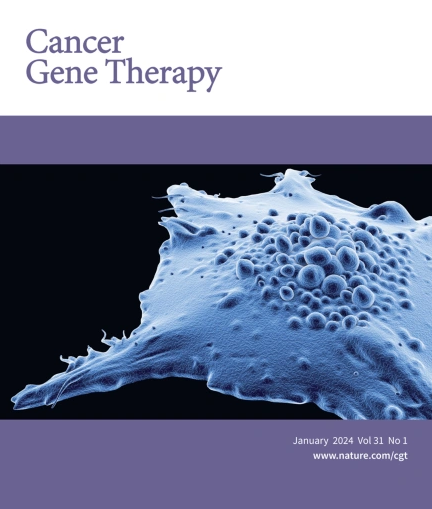黑色素瘤中RAC1 P29S热点突变作为癌基因分类的新见解
摘要
在黑色素瘤中普遍存在的RAC1P29S热点突变通过促进RAC1的持续激活来驱动肿瘤发生。这种突变增强了分子间的相互作用,并激活了关键的信号通路,使RAC1P29S成为癌症治疗的一个有希望的靶点。本研究对RAC1P29S进行了全面的生化和细胞基础表征,并与野生型RAC1以及T17N和F28L突变体进行了比较。P29S取代显著削弱核苷酸结合,同时加速内在核苷酸交换。虽然它对鸟苷解离抑制剂1 (GDI1)的调节作用最小,但RAC1P29S通过DBL家族鸟嘌呤核苷酸交换因子(GEFs)的激活作用降低,但通过细胞分裂奉献子2 (DOCK2)的激活作用保持有效。重要的是,P29S突变严重损害了gtpase激活蛋白刺激的GTP水解,这很可能通过延长其GTP结合的活性形式来促进RAC1P29S的过度活化。与p21激活的激酶1 (PAK1)相比,该突变对含有IQ基序的gtpase激活蛋白1 (IQGAP1)显示出更强的结合亲和力,这表明在空间上调节下游信号的效应相互作用发生了改变。这些生化结果与血清饥饿条件下RAC1P29S主要采用活性gtp结合状态的事实相一致。携带内源性RAC1P29S的IGR1人类黑色素瘤细胞即使没有上游GEF激活,也会表现出持续的RAC1P29S•GTP积累。此外,CPYPP对DOCK2的药理学抑制显著降低了这些细胞中RAC1P29S的激活,这证实了DOCK2在维持RAC1P29S驱动的信号传导中的关键作用。RAC1P29S的过表达激活了关键的致癌途径,包括ERK1/2和p38 MAPK,突出了其作为组成型活跃驱动突变的作用。总之,这些结果表明,靶向上游调节因子如DOCK2和下游效应因子,如IQGAP1,可能是对抗rac1p29s介导的黑色素瘤进展和靶向治疗耐药的有效治疗策略。癌细胞中RAC1P29S的激活和信号传导模型。RAC1P29S在细胞质中保持无活性的GDI1结合状态,GDI1阻止其膜结合。刺激后,gef(主要是DOCK2)通过促进GDP-GTP交换激活RAC1P29S,促进其过渡到活跃的gtp结合状态并启动下游信号传导。RAC1P29S优先结合IQGAP1而不是PAK1,反映了效应物相互作用的转变。IQGAP1作为支架蛋白,在空间上调节rac1p29s驱动的信号并放大其作用。正常情况下,p50GAP等gap通过加速GTP水解来调节RAC1,从而维持其动态活化周期。然而,P29S突变严重损害了p50gap介导的水解,导致RAC1P29S在gtp结合状态下积累,失去了时间调节。这种持续的激活过度激活下游效应物并促进癌症相关通路,包括ERK和p38 MAPK,它们驱动细胞生长、存活、侵袭和转移。The RAC1P29S hotspot mutation, which is prevalent in melanoma, drives tumorigenesis by promoting the persistent activation of RAC1. This mutation enhances molecular interactions, and hyperactivates key signaling pathways, making RAC1P29S a promising target for cancer therapy. This study provides a comprehensive biochemical and cell-based characterization of RAC1P29S, as well as comparisons with wild-type RAC1 and the T17N and F28L mutants. The P29S substitution significantly impairs nucleotide binding while accelerating intrinsic nucleotide exchange. While it minimally affects regulation by guanosine dissociation inhibitor 1 (GDI1), RAC1P29S exhibits reduced activation via DBL family guanine nucleotide exchange factors (GEFs) but retains effective activation by dedicator of cytokinesis 2 (DOCK2). Importantly, the P29S mutation severely impairs GTPase-activating protein-stimulated GTP hydrolysis, which most likely contributes to RAC1P29S hyperactivation by prolonging its GTP-bound active form. This mutation displays a stronger binding affinity for the IQ motif-containing GTPase-activating protein 1 (IQGAP1) than for the p21-activated kinase 1 (PAK1), indicating altered effector interactions that modulate downstream signaling spatially. These biochemical findings are consistent with the fact that RAC1P29S predominantly adopts an active GTP-bound state under serum-starved conditions. IGR1 human melanoma cells harboring endogenous RAC1P29S exhibit persistent RAC1P29S•GTP accumulation, even without upstream GEF activation. Furthermore, the pharmacological inhibition of DOCK2 with CPYPP significantly reduces RAC1P29S activation in these cells, which confirms the pivotal role of DOCK2 in sustaining RAC1P29S-driven signaling. Overexpression of RAC1P29S activates key oncogenic pathways, including ERK1/2 and p38 MAPK, highlighting its role as a constitutively active driver mutation. Together, these results imply that targeting upstream regulators such as DOCK2 and downstream effectors, such as IQGAP1, could be effective therapeutic strategies for counteracting RAC1P29S-mediated melanoma progression and resistance to targeted therapies. A model of RAC1P29S activation and signaling in cancer cells. RAC1P29S remains in an inactive GDP-bound state in the cytoplasm where GDI1 prevents its membrane association. Upon stimulation, GEFs, primarily DOCK2, activate RAC1P29S by promoting GDP-GTP exchange, facilitating its transition to the active GTP-bound state and initiating downstream signaling. RAC1P29S binds preferentially to IQGAP1 over PAK1, reflecting a shift in effector interactions. IQGAP1 acts as a scaffolding protein, spatially modulating RAC1P29S-driven signaling and amplifying its effects. Under normal conditions, GAPs such as p50GAP regulate RAC1 by accelerating GTP hydrolysis, thereby maintaining its dynamic activation cycle. However, the P29S mutation severely impairs p50GAP-mediated hydrolysis, leading to accumulation of RAC1P29S in its GTP-bound state and loss of temporal regulation. This persistent activation hyperactivates downstream effectors and promotes cancer-associated pathways, including ERK and p38 MAPK, which drive cell growth, survival, invasion and metastasis.

 求助内容:
求助内容: 应助结果提醒方式:
应助结果提醒方式:


